#Project Itoh: Harmony
Text
I wasn't expecting watching madoka magica to make me remember all this time I spent watching animes.
100% forgot to keep my watched-anime's op/ed playlist up to date.
RIP deleted videos that were the only trace of whatever I watched after I lost that bloc-note text file that I used as a back-up some time after I started losing interest in anime and noticed some of the openings had been deleted.
Big up to Black Bullet for making me discover nightcore and me thinking people were just going too far to avoid copyright.
C³ too, for making me love bloody lolis, and having this banger of an OP
Akame Ga Kill for being among the last animes I watched in that "phase" but probably one that I loved the most.
Lucky Star, because it's a crime how late I discovered it. (like 2018-2019)
Kubikiri Cycle, I keep remembering it everytime I get into one of those rememberance moments.
I'd need to take a day or two on a anime website and search one by one every anime that came out before 2017 at the very most, but right now I'm marking it all here:
because it's easier to find things there than on a youtube playlist that's half deleted/private videos.
I hope some people will find something to watch because so many of them were soooo good in my mind.
Also, considering what anime I remember and the theme I was going for, I don't know why the heck it took me so long to find the queer community.
And since I've yet to put it there, my most fav anime ever is Harmony, a movie from the Project Itoh.
Best Movie I've ever watched.
Damn, this thing went from "This anime made me remember a part of my past I forgot about" to "I really liked those animes, even did this in the past, what it'd become?" to "Please, those times were awesome, I wanna share it again"
May whomever read this have a great day/night
#black bullet#Cube x Curses x Curious#C³#akame ga kill#Lucky Star#Kubikiri Cycle#Project Itoh: Harmony#Harmony#Project Itoh#anime#nostalgia#2015#myanimelist#madoka magica#puella magi madoka magica
2 notes
·
View notes
Text

Last free will
#Miach Mihie#Project Itoh#Project Itoh trilogy#Harmony#<harmony/>#depressed (in a good way) after reading harmony I can’t even draw now#fanart#procreate#painting
29 notes
·
View notes
Photo



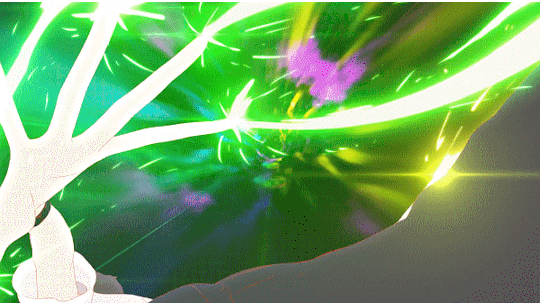

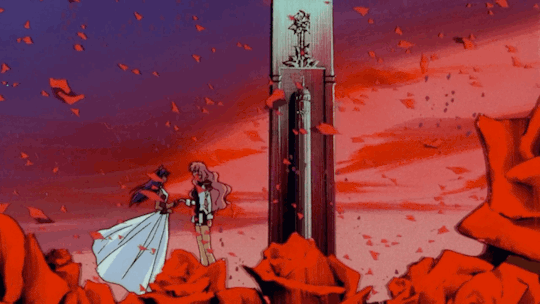
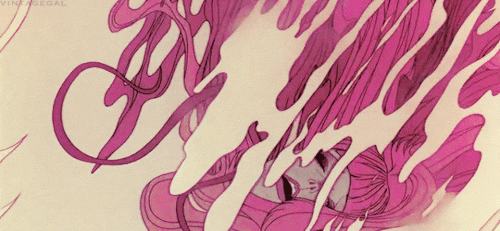

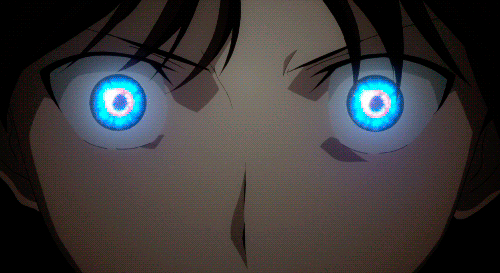
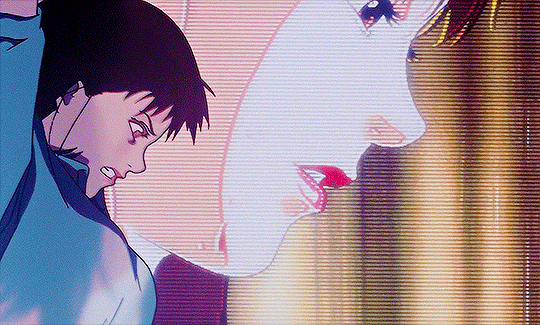
Top Ten Anime Films (Update As Of 2022)
1: Puella Magi Madoka Magica: Rebellion
2: Children of the Sea
3: Project Itoh: Harmony
4: Hello World
5: Paprika
6: Adolescence of Utena
7: Belladonna of Sadness
8: Millennium Actress
9: Garden of Sinners: Paradox Spiral
10: Perfect Blue
#Puella Magi Madoka Magica: Rebellion#rebellion#pmmm#children of the sea#project itoh#harmony#harmony anime#hello world anime#hello world#paprika#satoshi kon#utena#adolescence of utena#belladonna of sadness#millennium actress#garden of sinners#paradox spiral#Kara no Kyōkai: Paradox Spiral#kara no kyokai#perfect blue#anime film#anime movies#top ten list#anime#japanese film
486 notes
·
View notes
Text

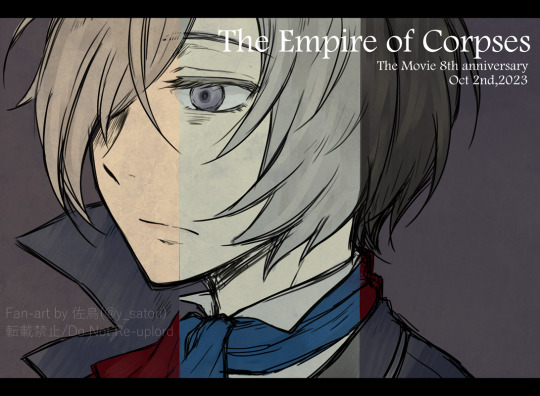
イトプロ
2023/03/20~10/02
4 notes
·
View notes
Text
Hey hello, HOW have I never heard of Harmony???? I randomly found it on MAL and thought the poster was vaguely gay so I watched it and like????
Peak yuri, literally peak yuri.
#harmony anime#harmony#idk how to tag this????#harmony 2015#<harmony/>#yuri#project itoh#project itoh harmony#fair warning to anyone who might wanna check it out there's a lot of suicide themes in this anime#also theres on-screen suicides#including from first person view
3 notes
·
View notes
Text
Animation Night 127: Project Itoh
Hi friends!
It’s Thursday - my last Thursday in America for the foreseeable future, in fact. On Monday I’ll be making a bizarre journey back to the UK via the ‘extremely direct’ route of Norway and Latvia, because it turns out that’s the cheapest way to get across the Atlantic. So that’s gonna be quite an adventure. I’m going to write some kind of post about things I’ve seen in America but probably when I get back for the sake of enjoying what time I’ve got left here...
Anyway, on to movies!
Tonight we’re going to be checking out a curious little sort-of trilogy of movies by different studies and directors from 2015, celebrating the works of the short-lived but influential science fiction author Satoshi Itō, aka Project Itoh.
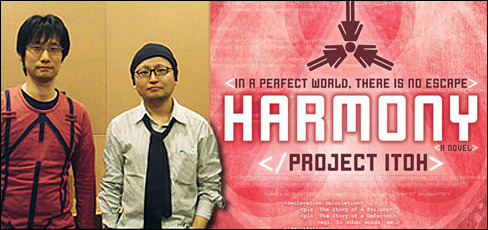
Here’s a picture of Itoh hanging out with his close friend Hideo Kojima at a book launch (via Metal Gear Trivia)
So who’s this Project Itoh guy? Born 1974 in Tokyo, there’s not a lot of biographical details about Itō’s early life, save that he went to Musashino Art University and worked as a web designer until the publication of his first novel, Genocidal Organ, in 2007.
What we do know is that he loved Metal Gear. Like, a lot. Itō got into Kojima’s games from the very start, and indeed most information about his life comes from Kojima’s account, alongside the blog where he published Snatcher and Metal Gear fanfic. The pair met at the 1998 Tokyo Game Show, at which Kojima was immediately struck by Itō’s devotion to his works, describing Itō as the one person who truly understand what he was writing about - an experience which ‘saved’ Kojima.
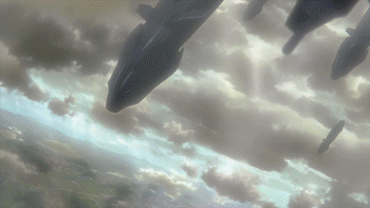
The two became close friends - and three years later, when Itō went into hospital with cancer in 2001, Kojima rushed to his bedside, and while there, showed him the first footage of MGS2: Sons of Liberty. Itō responded by promising he would not die until Kojima finished MGS2.
The experience of being hospitalised seems to have been very formative for Itō’s worldview. Youtuber The Canipa Project translates a blog post in which Itō talks about the experience of having his body sustained by scientific means only recently invented, making him a cyborg.
This time, Itō was able to keep his promise; when MGS2 came out, Itō wrote extensive analysis and exegesis of the game’s philosophical themes, getting a lot of attention within the fandom.
As the 2000s went on, it seems he judged it time to spread his wings and try releasing his own original stories under the pen name Project Itoh. The first, Genocidal Organ, was adapted from a fanfic he wrote about Snatcher into an original story. He submitted it to a novel writing competition in 2006, and while it didn’t win, he found a publisher in 2007; the novel became a hit, and so impressed Kojima that he asked Itō to take on the daunting task of writing a novelisation of Metal Gear Solid 4: Guns of the Patriots.

Itō apparently succeeded handily at the novelisation, and off these two successes, seemed set for a great writing career. His next novel, Harmony, dropped in 2008, dives straight into the themes of medical control; a dystopia in a post-nuclear war world where humans in the aftermath managed to cure cancer and most other diseases, only to institute a program of social control in an attempt to complete their utopia by eliminating mental illness as well. A story that’s clearly cutting pretty close to the bone from Itoh’s own experiences, since he was spending the 2000s dealing with recurrent cancer that took him back to hospital over and over.
And, indeed, the inevitable came in 2009, at which point Itō had just begun on his third novel Empire of Corpses. His cancer returned in force and he returned to hospital; once again Kojima went to his bedside and broke NDA to tell Itoh in detail about his next game, Metal Gear Solid: Peace Walker - that’s the odd PSP one featuring the Sandinistas. And once again, Itoh promised to live until Kojima finished the game, and write the novelisation of MGS3 and Peace Walker. But this time, it was a promise he could not keep; Itoh died at the age of 34.

In the wake of his death, a devastated Kojima dedicated Peace Walker to him (and later revealed he had planned to name as a successor following MGS5), and his friend Toe Enjoe took on the task of finishing Empire of Corpses. Once again, I’ll turn to Canipa Effect’s translation of some of the words Itō wrote three months before his death:
Humans dwell in others as a story. People can continue to live within someone else as a narrative. Then, by being part of the variety of spoken words, they become part of the fiction that can shape humanity.
(Words that resonate too strongly with the death of my friend Fall earlier this year.)
So far, a tragic story - but in some sense one with a slightly hopeful touch, in that rather than dying of cancer in 2001, Itō was able to enjoy eight more years of life and write several novels. But what has it got to do with animation?
Enter Noitamina (the word animation backwards), the late-night anime programming block run at the time by Koji Yamamoto as a means to get experimental, creative animation - such as Masaaki Yuasa’s adaptation of The Tatami Galaxy or Kenji Nakemura’s BakeNeko and Mononoke - out to a wider audience. Yamamoto departed the block in 2015, but in its heyday it was home to a number of radically creative works; you can read more about it over here on sakugablog in a recent post on the context behind The Tatami Galaxy.

So, in 2015, Noitamina announced it would fund three movie-length adaptations of Itoh’s three novels, each by a different studio and director. For all three movies, the character designer would be illustrator redjuice of the ‘band’ Supercell, a somewhat odd musical project consisting of just one musician and ten illustrators and designers who produce materials around the music.
Genocidal Organ would go to the hands of Shūkō Murase, at Studio Manglobe, a unique studio renowned for original works like Shinichirō Watanabe’s Samurai Champloo, Ergo Proxy, and Michiko & Hatchin (the latter of which I covered back on Animation Night 36). Murase seems like a natural choice for a highly philosophical cyberpunk story, given Ergo Proxy... but a spanner was thrown in the works when Manglobe went bankrupt; Genocidal Organ would eventually be saved by the resurrected Manglobe in the form of Geno Studio, but for this reason, it missed the planned simultaneous release of the three movies.
The story concerns a world in which a series of social breakdowns and genocides take place in a short period of time, all seemingly associated with an American named John Paul - who, when tracked down, claims to have discovered a ‘genocidal organ’ which can be activated to incite humans to acts of genocide. Without giving away too many spoilers, it’s basically about the current American-dominated geopolitical order.
On the animation side, the stars of the show would be Bahi JD, the Austrian from the earliest wave of sakuga fandom who became one of the first international ‘webgen’ animators to find a career in Japan... and Shūkō Murase himself, who animated several cuts as well as directing the film. As such, even a quick look at sakugabooru shows a lot of subtle, well-observed movement; I’m looking forward to seeing it fit together.

Harmony - the post-cancer dystopian one - went to Michael Arias at studio 4°C, of Tekkonkinkreet fame (see Animation Night 52 for Tekkonkinkreet, and Animation Night 74 for a more detailed history of 4°C), alongside veteran animator and director Takashi Nakamura who you may remember from the Chicken Man and Red Neck sequence of Robot Carnival. It comes at a point where 4°C had found a lot of comfort with their use of CG, two years before Mutafukaz (Animation Night 105), and even if the incredible background artists of Tekkonkinkreet may not be on this one, I imagine it will look pretty lavish as 4C stuff always does.
Then comes The Empire of Corpses. This one goes to Wit Studio (Animation Night 101), directed by Ryōtarō Makihara - also no stranger to scifi, with his main previous work being Hal, the story about a robot designed to play the role of a deceased partner. Unlike Itō’s other works, which are near-future science fiction, this one is more of a steampunk piece, taking place in an alternate 19th century in which mass produced Frankenstein’s monsters have become the industrial base of society; its characters bounce around the globe unearthing a conspiracy. It sounds kind of wild, honestly, with not just Frankenstein and Babbage but even frigging Sherlock Homes running around; Japanese spins on British characters like this are always kind of fascinating. (Also... there is some tragic irony about a story revolving around reanimated corpses being completed by Itō’s friend after his death.)
So, that’s the plan for tonight: we’re going to be watching all three Project Itoh movies, in the order that Itoh wrote them! I think there’s gonna be some great stuff in here, and I hope I’ve given you reasons to be excited too~
so, if you’d like to check these out, please make your way down to twitch.tv/canmom - we’ll be starting the program in about 20-30 minutes once people are in there!
27 notes
·
View notes
Text
"You've read those science fiction stories where humans manage to digitize the consciousness and upload themselves to some computer network. We do that, and our bodies will be nothing but antiquated dead media as far as our souls are concerned. It's not hard to imagine a few soulless bodies lying around between the piles of magnetic tape and flash memory cards in my office once we evolve our consciousness beyond the need for the flesh."
"Really?" I asked. "I always thought it was the other way around. That the soul was just a function of the body—a means to keep it alive. Once our bodies find something more suitable to propagate themselves and are able to trade in these old souls, then it's we who become the dead media."
That caught him off his guard. The professor sat with a blank expression on his face for a few moments. Then he laughed out loud. "True enough! A very radical idea at first blush, but from the perspective of evolution, I'd say yours is more correct. Perhaps it is I who was caught up in an antiquated notion of the human soul as something sacred and unique."
"Harmony" by Project Itoh, 2008
This. "Harmony" by Japanese Author Project Itoh is, in my eyes, the best book ever written since Mary Shelley wrote "Frankenstein". Because of discussions like this.
Because of thoughts that take a turn into a direction I have never heard of before. Because of conclusions that are at the same time absolutely novel, weirdly fascinating and devastatingly uncanny. Because of masterful foreshadowing.
Gosh. I really love this book.
#he's a genius#project itoh#keikaku itoh#harmony#project itoh harmony#book recommendations#science fiction#mind body problem#mind body connection#free will#schroed's thoughts
2 notes
·
View notes
Text
🇯🇵 Japan
Region: East Asia
Harmony
Author: Project Itoh

252 pages, published 2010
Original language: Japanese
Native author? Yes
Age: Teen-Adult
Blurb:
In the future, Utopia has finally been achieved thanks to medical nanotechnology and a powerful ethic of social welfare and mutual consideration. This perfect world isn't that perfect though, and three young girls stand up to totalitarian kindness and super-medicine by attempting suicide via starvation. It doesn't work, but one of the girls--Tuan Kirie--grows up to be a member of the World Health Organization. As a crisis threatens the harmony of the new world, Tuan rediscovers another member of her suicide pact, and together they must help save the planet...from itself.
Other reps:
Genres:#sci-fi #social issues #dystopian
My thoughts:
I was intrigued by the premise of this novel, so I picked it over other, more fantasy-based books for Japan.
Review to come.
Bookshop.org link | Kindle link
4 notes
·
View notes
Link
#harmony#Project Itoh#Jamie Marchi#Monica Rial#Miyuki Sawashiro#Michael Arias#Takashi Nakamura#Reina Ueda#lgbtfilm#lgbt cinema#lgbtcinema#lgbt movie#lesbian film#lesbiancinema#lesbian movie#lesbian cinema#wlwfilmreviews#wlwfilm#wlw movie#wlw cinema#wlwcinema#sapphic film#sapphic cinema#sapphic movie#sapphiccinema#queer film#queer movie#queer cinema#queercinema
0 notes
Text
me watching Project Itoh's Harmony (2015) for the yuri and being hit with questions about bodily autonomy in an age of medical progress, free will, human consciousness AND toxic doomed yuri
#the movie could have been so much better had the pacing been better#and had the budget not had been so obviously blown on a few key scenes that left them with downtime filler scenes that felt awkward#and transitions à la star wars#BUT. I've been thinking abt it the whole morning#so. something was done right#there's a great story in that confused storytelling
8 notes
·
View notes
Text

2024/03/20 伊藤計劃命日に寄せて
文章は「人という物語」より
#ファンアート#fan art#project itoh#illustration#屍者の帝国#The Empire of Corpse#ハーモニー#harmony#虐殺器官#Genocidal Organ
0 notes
Text
Book Review: Harmony by Project Itoh

Harmony: An Ambiguous Dystopia
In the late 2000s, a young author with the unconventional pen name Project Itoh (伊藤計劃) appeared in the Japanese science fiction world like a bolt from the blue. His first novel Genocidal Organ (2007) was rated by a poll in Hayakawa Publishing’s annual SF guidebook (SFが読みたい) as the best novel in the genre from that decade, and his second novel Harmony (2008) received both of Japan’s most prestigious SF awards, the Seiun and the SF Grand Prix, as well as a special citation from America’s Phillip K. Dick Award.
Sadly, though Itoh’s influence and reputation persist to this day, his tenure as a professional author was all too brief. The tragic irony of Harmony—a near future tale about an oppressive global medical regime—is that Itoh edited the proofs while in and out of hospital during the final months of his long battle with cancer. Itoh died in 2009 at the age of 34, just two years after his novelistic debut. Because Itoh himself passed away long before COVID-19 reared it’s spike protein head, we can only speculate as to how he would have reacted to the pandemic and its restrictions on freedom in the name of saving lives. His novels display respect for science and acceptance of a materialist metaphysics, so there is little reason to believe that he would have opposed fact-based public health recommendations such as vaccination, masking, and distancing on principle. Still, when Harmony is read now, in the post-pandemic age, one can’t help noticing its relevance to the conflict—illustrated most vividly in the USA but played out around the globe—between those who opposed government measures to limit the spread of covid and those who willingly—sometimes eagerly—cooperated. Which side of the disagreement the novel falls on depends on whether you believe that the future it depicts is meant to be terrifying or desirable. Although Harmony appears on first glance to be a work of dystopian literature targeted at a kind of medical authoritarianism, there are compelling reasons, as we will see, to treat it as a utopian tale that promotes government interventions to protect human life.

Lifeist Hegemony Through Physiological Surveillance
In a near future, the world has been taken over by the “ademedistration”, a global network of medical conclaves that regulate all social interaction. Through “WatchMe”, a system of countless nanobots called “medicules” that permeate the body, the homeostasis of every citizen is constantly monitored. Here we have a surveillance regime akin to the Big Brother panopticon of George Orwell’s 1984, except instead of utilizing television-like viewscreens to watch and listen in on the people, the surveillance infrastructure is embodied and dedicated only to the task of medical nannying. Driving admedistration institutions is “lifeism”, an ideology that treats the body as a public resource that must be kept healthy and forced to procreate. Procreation is a crucial biological service in the wake of a nuclear war called the Maelstrom that caused widespread genetic mutation, infertility, and depopulation. (Some passages suggest that the Maelstrom resulted from the events of Genocidal Organ, placing Harmony second in the same fictional continuum.) For reasons we don’t learn until the epilogue, Harmony is told in Emotion-in-Text Markup Language (ETML). That is, every beat of the story is marked with representative emotions, mental actions, or moods, in a play on HTML. For example, the beginning of the English edition (translated by my friend Alex. O Smith) reads as follows:
I have a story to tell. <declaration:calculation> <pls: The Story of a Failure> <pls: The Story of a Defector> <eql: In other words, me.> </declaration>
This formal experiment no doubt derives from Itoh’s original career in web design, through which he would have been familiar with front end code. Our first-person protagonist is Tuan. In childhood, Tuan was friends with two girls, Cian and their leader Miach. Under the influence of Miach, who rails constantly against lifeism, the trio decide to plot an act of rebellion. But since the admedistration lacks any central authority, there is no clear target to strike. So Miach concludes that their only hope of resistance is to flout the moratorium on death by committing group suicide. The girls then make a pact to take drugs that prevent absorption of nutrients from food, a kind of pharmaceutically-induced starvation that is supposed to go undetected by admedistration officials because the girls are still minors and have yet to receive WatchMe. When Cian tattles, she and Tuan are saved before it’s too late but Miach dies as planned. This leaves the two survivors to grow up without their leader, struggling to understand the meaning of Miach’s fatal dissent and their own failure to join her. As an adult, Tuan finds employment with Helix, a militarized arm of the World Health Organization that fights for lifeism in developing regions around the world. Tuan has chosen a career in soldiering because it allows her to visit far-flung war zones where she can get her hands on cigarettes, booze, and narcotics. By hacking her WatchMe, she is able to to send spoofed physiological data, thereby quietly thumbing her nose at the health-enforcing authorities. Tuan’s life of insalubrious impudence continues until she returns to Japan and reunites with Cian, who has taken a typical admedistration job and seems to have conformed to lifeist society. Then, over dinner at a nice restaurant, Cian kills herself in a gory display by cutting her own jugular vein. Tuan soon learns that Cian’s death was part of a simultaneous mass suicide. Now, through admedistration propaganda news networks, the organizers of this mysterious atrocity demand that everyone murder at least one other person or they too will be forced to commit suicide. The ultimatum seems uncannily reminiscent to Tuan of Miach’s morbid plotting when they were children, and she wants to understand how the bloodbath was perpetrated. Her investigations take her to Baghdad, now a locus of cutting-edge medical research, where she meets her father, the inventor of the WatchMe system, and later to the caves of the Caucasus mountains, where she confronts the villain behind a scheme to snuff out essential facets of human nature and inaugurate a kind of totalizing harmony.

Antivaxxer Dystopia or Science Credulous Utopia?
Contrary to what the high praise both within and without Japan might suggest, Harmony is not an exemplar of top-class story-craft. The characters, with the exception perhaps of Thanatos-channeling Miach, are two-dimensional at best. The dearth of description makes a missed opportunity of the exotic settings, and, combined with the comparatively plentiful dialogue, reduces most of the novel to a series of disembodied voices waxing intellectual. Even the philosophical discussions of consciousness and free will crucial to the denouement fail to stand up to the most rudimentary scrutiny. One must suppose that Itoh, writing on his deathbed, struggled to flesh out the vision of his final work as fully as he had demonstrated himself capable of in earlier stories such as Genocidal Organ. Still, Harmony does represent a rare* and memorable example of a Japanese novel that fits in either the dystopian or utopian tradition—perhaps both at once. Like Ursula K. le Guin’s masterpiece The Dispossessed, which bears the subtitle “An Ambiguous Utopia,” Harmony constructs a nuanced future. Ultimately, the position it encourages readers to take on the medical nanny state remains inconclusive, making the text an interesting lens through which to consider the polarization around government responses to the pandemic. If Harmony is classified as a work of dystopian literature as is standard**, it presents just the sort of dark future one might imagine the anti-vaxxer or the anti-masker to conceive. Harmony could then be read as a cautionary tale, illustrating the dangers of allowing the CDC or a similar medical body to tell us what to do. (Remember that the WHO is literally a global military force!) However, Itoh’s future lacks many features that would make for a persuasive dystopia. For example, there are too many holes in the WatchMe system, with minors and touring soldiers outside its reach, for life under the admedistration to feel particularly suffocating or oppressive. A dystopia that is easy to escape hardly seems dystopian at all. It may be that Itoh intended for readers to accept Miach’s insistence on the dehumanizing effect of legally mandating good health, but the novel contains scarce examples to back up her vituperations. Surveillance of our very cells would certainly be a terrifying prospect, while the homogenization of physical appearance that afflicts admedistration citizens presents an eerie image of obedience, as if to assert that following medical advice transforms human beings into interchangeable ants or zombies. But as a response to a catastrophe like the Malestrom, formulating policy that is to some degree overbearing seems entirely reasonable. Indeed, there are worse things than being cajoled into taking care of your body when the survival of the human species is on the line. Would the morally appropriate response be to instead prioritize individual choice and condemn humanity to extinction? Moreover, the admedistration mechanisms for encouraging compliance with lifeism seem mild, generally coming in the form of education and social pressure rather than force. Compare this to the lockdowns of 2020-2022 in countries such as Australia and China that were positively draconian even though the crisis they sought to mitigate (i.e. the pandemic) was far less threatening than worldwide nuclear fallout. For people who are eager to obey public health recommendations in the name of longevity for all, I hazard that a fully functioning lifeist civilization would be a utopia. There, in the capable hands of admedistration scientists, with the most advanced medical technology the world has ever seen, we would all extend not just our lifespans but our healthspans and live without fear of two of the greatest woes human beings face—illness and death. Whatever we might lose in exchange, for some it would seem worth the sacrifice… Whether taken as a dystopia, a utopia, or something else, Harmony anticipated many of the debates of the pandemic more than a decade before the word COVID-19 was even coined. When considering the highly politicized fight between libertarian extremists and virtue signalling rule-followers around whether governments should mandate masks, lockdowns, and vaccines, there has been a tendency for empirically minded liberals and progressives to dismiss the skeptics as far-right or irrational imbeciles. But Itoh reveals the core of meaningful objection on the other side—the dangers of the medical nanny state taken too far—while simultaneously describing an extreme scenario in which curtailments of freedom may be justifiable. Itoh was clearly a perceptive writer. If only he had lived to see how our past matched up to his future…
Notes
*Japanese proto science fiction of the late 19th and early 20th century shows a preoccupation with political dystopias and utopias. However, examples are much harder to find in the later Japanese tradition than that of the Anglophone. **In her article on the history of manga and anime, Ada Palmer classifies Harmony as a “quasi-utopia.”

essay by Eli K.P. William. I am the author of three dystopian sci-fi novels: Cash Crash Jubilee, The Naked World, and A Diamond Dream. I also translate Japanese literature, including the bestselling novel A Man, by Keiichiro Hirano. More about me here. Follow me on Twitter: @Dice_Carver Or if you want more essays like this one, join my newsletter ALMOST REAL
1 note
·
View note
Text
Animation Night 173: Takashi Nakamura
Hi everyone! It's that time of the week again~
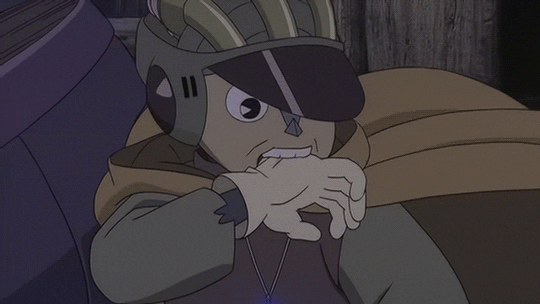
The day that puppets bite their gloves off.
Tonight on Animation Night we'll be taking a look at the works of Takashi Nakamura (中村 たかし).
Nakamura is a director who flies under the radar a bit over here, but for those who know him, he's a unique director - one who we've actually encountered a couple of times before, actually! He directed one of my favourite shorts in Robot Carnival [Animation Night 158] Chicken Man and Red Neck, in which the machinery of a city comes alive to have a violently strange Bosch-like party led by a strange red-robed robot, witnessed only by one salaryman on a moped...
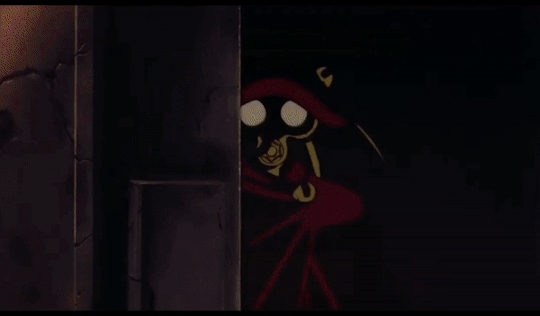
...and if you remember when we looked into the three adaptations of Project Itoh's novels [Animation Night 127], he co-directed Harmony with Michael Arias, a powerfully understated film about a high tech biopower future and people who reject its utopia through a suicide pact. We also saw him in the Japan Animator Expo, with the charming Bubu & Bubulina...
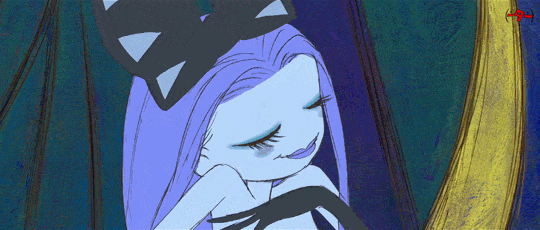
But let's give a fuller story...
As an animator, Nakamura entered the industry very young, signing on as a colourist and inbetweener at Tatsunoko in 1974 - at which point he was only 16, an aspiring mangaka newly arrived in Tokyo. Working in Tatsunoko's distinctive 'industry within an industry', he was introduced to Hirokazu Ishino's 'Anidō' association, in which he was introduced to not just many important animators but also had the chance to see animation from around the world, from Norm McLaren to Japanese independent animators like Kenzō Masaoka. The two films that got him most excited were Takahata's Horus, Prince of the Sun [AN41] and Disney's Fantasia [AN15], both of which contained incredible flexes of effects animation.
(Incidentally, it makes me happy that a lot of the films Watzky mentions showing at Anidō showed up on here! Following in the footsteps of giants and all that.)
Once Nakamura got the animation bug he put aside his manga aspirations and became a key animator, going freelance a couple years later. In 1979 he saw Galaxy Express 999, and got to witness the insane 'liquid fire' effects of Kanada, and he instantly became a devotee - soon enough getting a chance to work with Kanada directly.

And by the early 80s Nakamura was definitely making a name, already working in animation direction and solo-animating entire episodes of Gold Lightan for Tatsunoko. The next couple of years he'd end up working on Nausicaa, Macross DYRL and the with Rintaro [AN53, 134] on Genma Taisen. By now he was specialising hard in effects (not unlike Anno!), and his work had become terrifyingly elaborate, look at this building collapsing into every single element or the clothes coming to the life under the power of a psychic. His work also inspired another incredibly significant animator to enter the industry - Kōji Morimoto, future cofounder of Studio 4°C - and they ended up working together on Genma Taisen.
Meanwhile on Nausicaa, Morimoto handled some of its most memorable scenes like the opening sequence where Nausicaa is pursued by the giant Ohmu. Once again you see his fascination with effects and debris, like the shot where the Ohmu explodes out of the forest, sending stalks flying in every directions. In Macross DYRL he animated the scenes of the gravity flipping sideways and a street's worth of stuff tumbling down all at once, elaborating on a scene by Itano from the TV show.
In short, if there's lots of bits of stuff flying around in a mid-80s movie, there's a good chance that Nakamura was involved somehow.
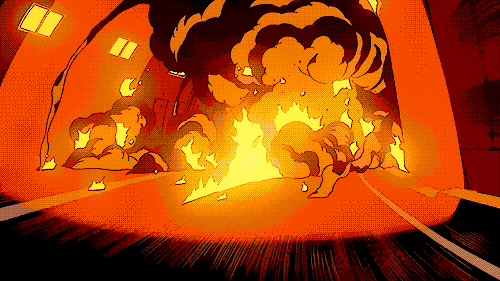
Such a focus made him a perfect fit for the 'realist school' developing in the late 80s - whyat you might loosely call the Otomo circle. You see his work on both Manie-Manie/Neo Tokyo and Robot Carnival, and naturally enough he ended up part of the team for Akira. Given what he'd already accomplished, could he somehow step it up another notch? You bet.
Going by sakugabooru comments, Nakamura's role in Akira was mainly related to two things: explosions, and animation direction. Considering how iconic the explosions in Akira are, and how challenging it was to animate Otomo's very solid and 3D designs... the success of the film depended a lot on Nakamura's insane drawing skills. Further, he was a kind of 'teacher' to the rest of the staff, such as Morimoto. But this was apparently the 'limit' for Nakamura, and after Akira he turned from creating animation for others.
And this point marks a major stylistic turn in Nakamura's work. Starting with the World Masterpiece Theatre adaptation of Peter Pan, on which he worked as character designer, he adopted a highly stripped-down, simplified style. With all the Akira goodwill, he was able to pull in many of the new stars of the 'realist' school, from Okiura to Ohira. But his work became a lot less flashy, focusing more on a Disney-like approach where it's about creating a consistent sense of life rather than individual flashy sequences.
The Hakkenden [AN 122] was one of his first chances to experiment with the new style as a director, with Episode 4 really kicking off the series' trend of completely redesigning the characters according to the sensibilities of each director. He also worked on the kinda obscure but gorgeous realist-school film Junkers Come Here [AN 118] as his own film debut, Catnapped!, progressed.
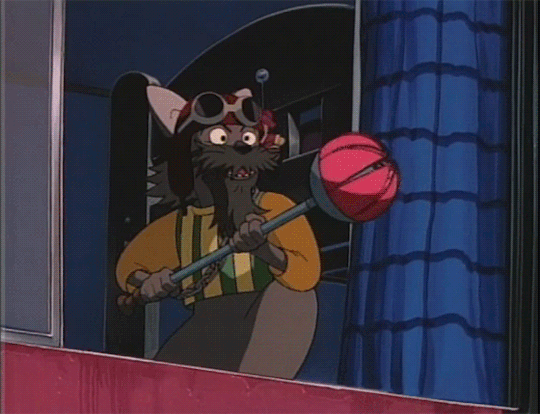
So Catnapped! This is a weird movie. Many people see a Disney influence in its style, and it definitely broke the 90s trend with a younger target audience - but Disney could never make a movie filled with as much imaginative strange shit as this one. Watzky points out how much Otomo influence there is in the direction - dense environments and elaborate multiplane shots, in contrast to simple character designs which afford a lot of movement. These designs allow great animators like Okiura [AN139] (who animated most of the finale) to really go to town. There's a great para in Watzky's article on the different directions taken by the 'realist' animators.
Catnapped is a pretty short film at less that 80 minutes, a revel of visual imagination; Nakamura's next film A Tree of Palme is just as distinctive but in a different direction. It's another take on the Pinocchio story [c.f. AN138], but a very 'dark, metaphysical' one, with its biggest inspirations apparently being French - Moebius and René Laloux [AN71, 93], with Mutsuo Koseki coming up with art direction capable of comparing to Laloux. The three year megaproject pulled in animator legends from across the board - Inoue, Ohashi, Ando, Masuo, Matsutake, Umetsu! (Count how many directed part of Robot Carnival).
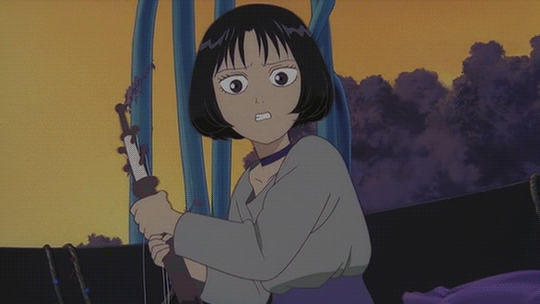
The character designs of Palme look simple in stills, but once you see them in motion, they're anything but - incredibly volumetric and full of life and movement.
In the 2000s and 2010s, Nakamura ended up working with Colorido and 4C a lot (naturally enough given the connection with Morimoto!), increasingly making effective use of CG in his projects. This led up to The Portrait Studio (写真館 Shashinkan) (c.f. AniObsessive) in 2015 - an almost solo short film, with Nakamura writing, storyboarding, designing characters and doing all the key animation, which is a kind of slice through Japanese history through the lens of a photographer who just wants to figure out a way to get his client to smile.
Much like Palme, The Portrait Studio combines simple character designs (in a stylised picture-book look) with very precise, realist animation on 2s and 1s to lend them a sense of density and 'existence'. Moreover, unlike most anime, it uses the raw pencils as finished lines instead of redrawing them clean on a computer. The style might call to mind Otomo's Cannon Fodder, and in fact the two films share a colour designer. 3D is integrated with an unusual degree of skill and subtlety. It makes for a fascinating combination, a very memorable and impactful film for all its apparent simplicity.
So, that's our focus for tonight! We'll be watching Catnapped!, A Tree of Palme and The Portrait Studio, and getting to find out what the deal is with Nakamura - one of the Very Important Guys in the history of anime, influential on so many of my faves... but all too often overlooked by people who aren't like, huge animation nerds.
If that sounds fun, come join me at twitch.tv/canmom - going live in just a minute! I've been wanting to do Nakamura for ages, and today I finally found energy for a writeup. See you there~
526 notes
·
View notes
Text
It was just me and the six-legged goat in the back of the truck. The goat had been put together to army specs, so no pink was involved. Everything was drab olive, smoky, dirty—the colors of war. I had been told that the six-legger's control mechanism consisted of cultivated horse nerves specially trained for the environment. The original horse came from local stock, so they were used to the mountains, Uwe said.
"Harmony" by Project Itoh, 2008
In the marvellous science fiction novel "Harmony", Japanese author Project Itoh describes autonomous vehicles like airplanes or legged robots that have animal brain tissue in their control mechanisms, so that their computer systems have quick, almost intuitive access to information about how to use wings or legs. In 2008, when "harmony" was first published, this must have been a weird but fascinating thought. Bionics put to the extreme.
I first read "Harmony" in 2018, after watching the absolutely congenial anime adaptation by Michael Arias and Takashi Nakamura of Studio 4°C. And ever since this time I increasingly have to think about machine learning and artificial neural networks when I'm reminded of "harmony". And about how very clever Itoh's vision of the future was and still is.
No, the computers of the future won't need real brain tissue. But simulating the neural network of a goat to enable a mobile robot to climb some rocks? Pretty clever.
Pretty clever, Project Itoh.
#he's a genius#project itoh#keikaku itoh#harmony#project itoh harmony#book recommendations#science fiction#robotics#bionics#neural network#machine learning#schroed's thoughts
2 notes
·
View notes
